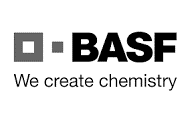- HS Classification Opinions
- 641 Views
Analysis of Reasons for Incorrect Classification of Chemicals in Tariff Rulings
Application of this Incorrect Rulings to Chemicals and Raw Materials for Industrial Use
The notes causing this state of affairs are Section VI Note 3, Section VII Note 1
Section VI Note 3:
Applies to Chapters 28-38{ PRODUCTS OF THE CHEMICAL OR ALLIED INDUSTRIES}
3.- Goods put up in sets consisting of two or more separate constituents, some or all of which fall in this Section and are intended to be mixed together to obtain a product of Section VI or VII, are to be classified in the heading appropriate to that product, provided that the constituents are :
(a) having regard to the manner in which they are put up, clearly identifiable as being intended to be used together without first being repacked;
(b) presented together; and
(c) identifiable, whether by their nature or by the relative proportions in which they are present, as being complementary one to another.
Section VI Note 3. Detailed Meaning by WCO
This Note deals with the classification of goods put up in sets consisting of two or more separate constituents, some or all of which fall in Section VI. The Note is, however, limited to sets of which the constituents are intended to be mixed together to obtain a product of Section VI or VII. Such sets are to be classified in the heading appropriate to that product provided that the constituents meet conditions (a) to (c) of the Note.
Examples of goods in such sets are dental cements and other dental fillings of heading 30.06 and certain varnishes and paints of headings 32.08 to 32.10 and mastics, etc., of heading 32.14. As regards the classification of goods put up without a necessary hardener, ‑ see, in particular, General Explanatory Note to Chapter 32 and Explanatory Note to heading 32.14.
It should be noted that goods put up in sets consisting of two or more separate constituents, some or all of which fall in Section VI, intended to be used successively without prior mixing, are not covered by Note 3 to this Section. Such goods put up for retail sale are to be classified by application of the General Interpretative Rules (generally Rule 3 (b)); in the case of those not put up for retail sale the constituents are to be classified separately.
Section VII: PLASTICS AND ARTICLES THEREOF; RUBBER AND ARTICLES THEREOF
Applies to Chapters 39&40
Notes.
1.- Goods put up in sets consisting of two or more separate constituents, some or all of which fall in this Section and are intended to be mixed together to obtain a product of Section VI or VII, are to be classified in the heading appropriate to that product, provided that the constituents are :
(a) having regard to the manner in which they are put up, clearly identifiable as being intended to be used together without first being repacked;
(b) presented together; and
(c) identifiable, whether by their nature or by the relative proportions in which they are present, as being complementary one to another.
Section VII Note 1: Detailed Meaning by WCO
This Note deals with the classification of goods put up in sets consisting of two or more separate constituents, some or all of which fall in Section VII. The Note is, however, limited to sets of which the constituents are intended to be mixed together to obtain a product of Section VI or VII. Such sets are to be classified in the heading appropriate to that product provided the constituents meet conditions (a) to (c) of the Note.
It should be noted that goods put up in sets consisting of two or more separate constituents, some or all of which fall in Section VII, intended to be used successively without prior mixing, are not covered by Note 1 to this Section. Such goods put up for retail sale are to be classified by application of the General Interpretative Rules (generally Rule 3 (b)); in the case of those not put up for retail sale the constituents are to be classified separately
Analysis of the above Explanatory Notes
1.Transportation of a variety of chemicals in the same container, even if they will be reacted to form an end product does not confer Set ship. If a reaction will take place, then does this not offend the requirement that ‘’ intended to be used together without first being repacked’’
2.That requirement means that they will be sold at the lowest levels of retail sale without being repacked. Simply put, can you buy the chemicals that are to be reacted to form an end product at Carrefour, Quick matt, Naivas.
- The requirement presented together means that the imported goods are already packed together from the country of Export to be sold as is, no further processing eg. Kitchen Sets that we buy at supermarkets. Presented together means in one package, a 40 foot container is not a package, It is a means of Transport. if the chemicals were to obey this rule, One drum would need to be within another, then loaded into containers, and that would be a disaster in waiting. No insurance company would insure the consignment. No shipping line would transport the so called Set. When I was stationed at Malaba, a consignment of concentrated Hydrogen Peroxide leaked from the drums. The containers floor had been corroded by the chemical and it was smoking. The officers took off after instructing the driver to park very far from the yard in an open place and run.
- Let us use Salt as an Example. Salt is sold at supermarkets. It is made of Sodium(Na) and Chlorine(Cl). If I import sodium and chlorine in one container, do they become a set, because they will be reacted to form salt. Do we sell them to Quick Matt to react them or will Quick Matt sell them as they are to retail users, so as to react them at home to get salt. Assuming they are a set in the container, then they must sold to Wanjiku in the container so as obey the rule ”in one package”
5.The rules of classification demand that goods are to be classified as presented. If the goods are not a set at the time of importation, then they are not to be classified a sets
6.The Term ‘’being complementary to one another’’ refers to an activity/function to be carried out by a set. A Fork is complementary to a Spoon, and to a knife for the activity of eating. If we are to use the example of sodium and chlorine. Are they complementary for a day-to-day activity? Which one? Sets are designed to support certain day to day activities Salt could form a set with Royco Mchuzi Mix
- Is sodium as imported Salt? No, Is Chlorine as imported Salt? No. Then why would you want to classify them as salt because they are in one container. Remember that finished goods attract higher rates of import duty, therefore classifying raw materials as projected finished goods defeats the purpose of the GOKs intention of encouraging manufacturing in Kenya. Why would I import raw materials if someone will rule that a raw material is equivalent to the finished product.
- Are their rules defining what a set is? Yes, Very Detailed, including examples. Rule 3b is extracted below: Note the following. It defines what qualifies to be a set. It defines conditions that an import must meet to qualify for classification as a set
- Note the following Points from Note 3(b)
- “Retail sale” does not include sales of products which are intended to be re-sold after further manufacture, preparation, repacking or incorporation with or into other goods. Therefore chemicals imported for further manufacture cannot be treated as sets
- As a general rule, the components of these composite goods are put up in a common packing
A 40-foot container is not a common packing. It is a mode of transport
- The term “goods put up in sets for retail sale” therefore only covers sets consisting of goods which are intended to be sold to the end user where the individual goods are intended to be used together.
- Consist of products or articles put up together to meet a particular need or carry out a specific activity; and
- Are put up in a manner suitable for sale directly to end users without repacking (e.g., in boxes or cases or on boards).
- (XI) This Rule does not apply to goods consisting of separately packed constituents put up together, whether or not in a common packing, in fixed proportions for the industrial manufacture of, for example, beverages.
- Note that Note XI expressly disqualifies any item imported for industrial processing as a set
RULE 3 (b) of the Rules of Classification.
(VI) This second method relates only to :
(i) Mixtures.
(ii) Composite goods consisting of different materials.
(iii) Composite goods consisting of different components.
(iv) Goods put up in sets for retail sales.
It applies only if Rule 3 (a) fails.
(VII) In all these cases the goods are to be classified as if they consisted of the material or component which gives them their essential character, insofar as this criterion is applicable.
(VIII) The factor which determines essential character will vary as between different kinds of goods. It may, for example, be determined by the nature of the material or component, its bulk, quantity, weight or value, or by the role of a constituent material in relation to the use of the goods.
(IX) For the purposes of this Rule, composite goods made up of different components shall be taken to mean not only those in which the components are attached to each other to form a practically inseparable whole but also those with separable components, provided these components are adapted one to the other and are mutually complementary and that together they form a whole which would not normally be offered for sale in separate parts.
Examples of the latter category of goods are :
(1) Ashtrays consisting of a stand incorporating a removable ash bowl.
(2) Household spice racks consisting of a specially designed frame (usually of wood) and an appropriate number of empty spice jars of suitable shape and size.
As a general rule, the components of these composite goods are put up in a common packing.
(X) For the purposes of this Rule, the term “goods put up in sets for retail sale” shall be taken to mean goods which :
(a) consist of at least two different articles which are, prima facie, classifiable in different headings. Therefore, for example, six fondue forks cannot be regarded as a set within the meaning of this Rule;
(b) consist of products or articles put up together to meet a particular need or carry out a specific activity; and
(c) are put up in a manner suitable for sale directly to end users without repacking (e.g., in boxes or cases or on boards).
“Retail sale” does not include sales of products which are intended to be re-sold after further manufacture, preparation, repacking or incorporation with or into other goods.
The term “goods put up in sets for retail sale” therefore only covers sets consisting of goods which are intended to be sold to the end user where the individual goods are intended to be used together. For example, different foodstuffs intended to be used together in the preparation of a ready-to-eat dish or meal, packaged together and intended for consumption by the purchaser would be a “set put up for retail sale”.
Examples of sets which can be classified by reference to Rule 3 (b) are :
(1) (a) Sets consisting of a sandwich made of beef, with or without cheese, in a bun (heading 16.02), packaged with potato chips (French fries) (heading 20.04) :
Classification in heading 16.02.
(b) Sets, the components of which are intended to be used together in the preparation of a spaghetti meal, consisting of a packet of uncooked spaghetti (heading 19.02), a sachet of grated cheese (heading 04.06) and a small tin of tomato sauce (heading 21.03), put up in a carton :
Classification in heading 19.02.
The Rule does not, however, cover selections of products put up together and consisting, for example, of : ‑ a can of shrimps (heading 16.05), a can of pâté de foie (heading 16.02), a can of cheese (heading 04.06), a can of sliced bacon (heading 16.02), and a can of cocktail sausages (heading 16.01); or
‑ a bottle of spirits of heading 22.08 and a bottle of wine of heading 22.04.
In the case of these two examples and similar selections of products, each item is to be classified separately in its own appropriate heading. This also applies, for example, to soluble coffee in a glass jar (heading 21.01), a ceramic cup (heading 69.12) and a ceramic saucer (heading 69.12) put up together for retail sale in a paperboard box .
(2) Hairdressing sets consisting of a pair of electric hair clippers (heading 85.10), a comb (heading 96.15), a pair of scissors (heading 82.13), a brush (heading 96.03) and a towel of textile material (heading 63.02), put up in a leather case (heading 42.02) :
Classification in heading 85.10.
(3) Drawing kits comprising a ruler (heading 90.17), a disc calculator (heading 90.17), a drawing compass (heading 90.17), a pencil (heading 96.09) and a pencil‑sharpener (heading 82.14), put up in a case of plastic sheeting (heading 42.02) :
Classification in heading 90.17.
For the sets mentioned above, the classification is made according to the component, or components taken together, which can be regarded as conferring on the set as a whole its essential character.
(XI) This Rule does not apply to goods consisting of separately packed constituents put up together, whether or not in a common packing, in fixed proportions for the industrial manufacture of, for example, beverages.
Janron Consult,Tax Consultant Kenya, Customs Tax Consultant Kenya, Tax Advisory Kenya








